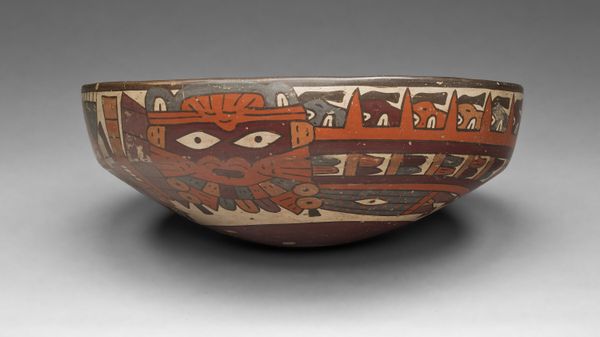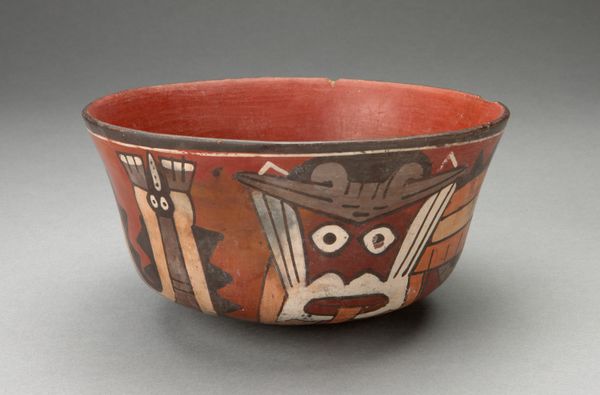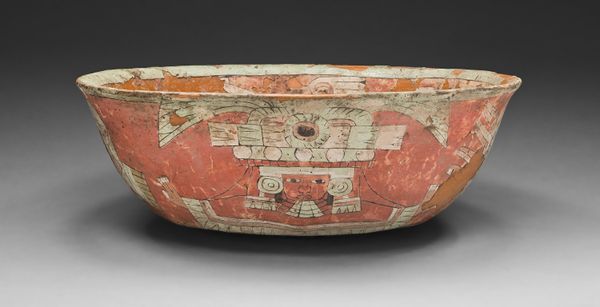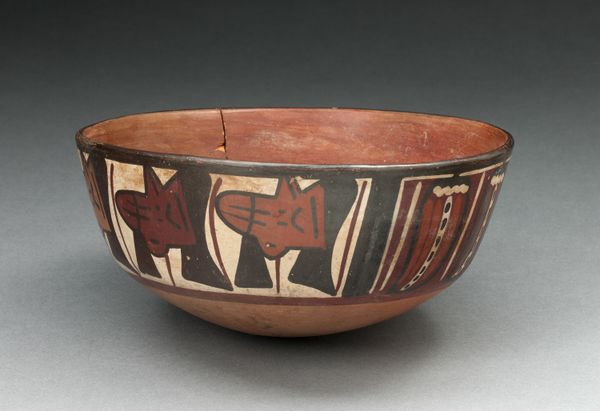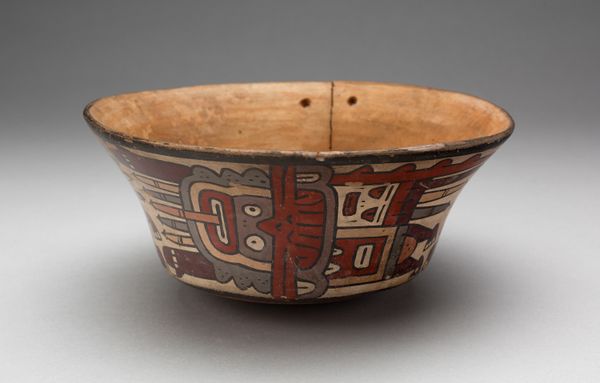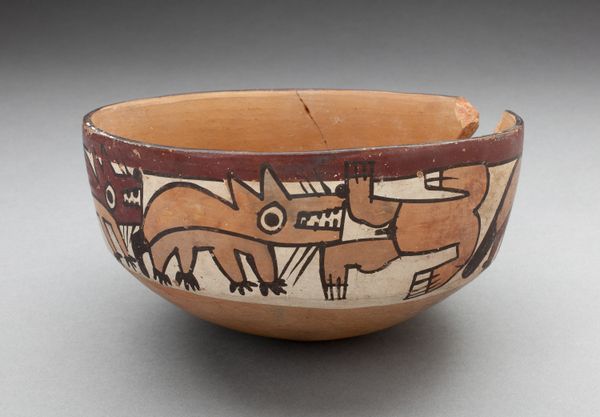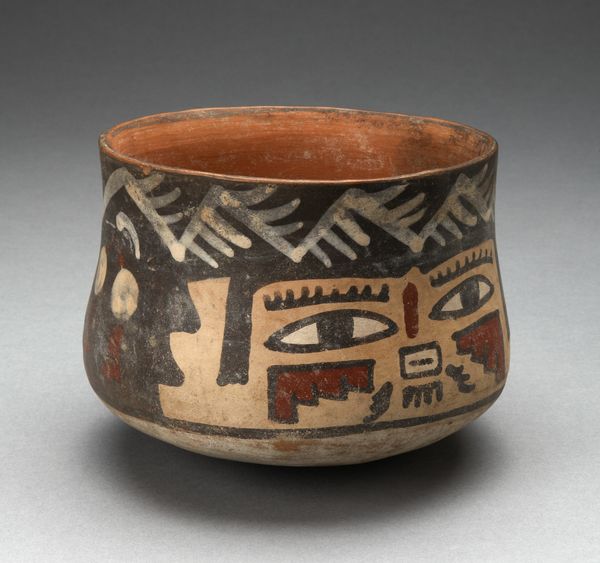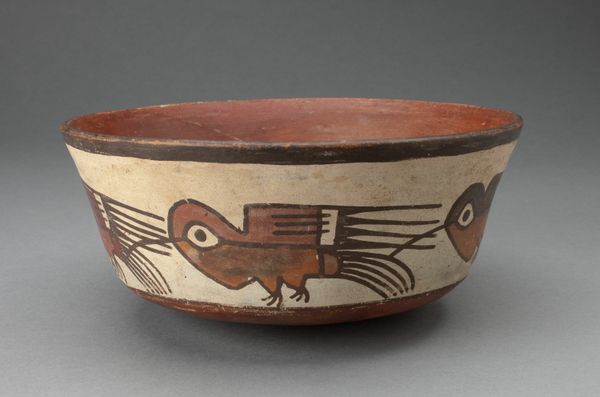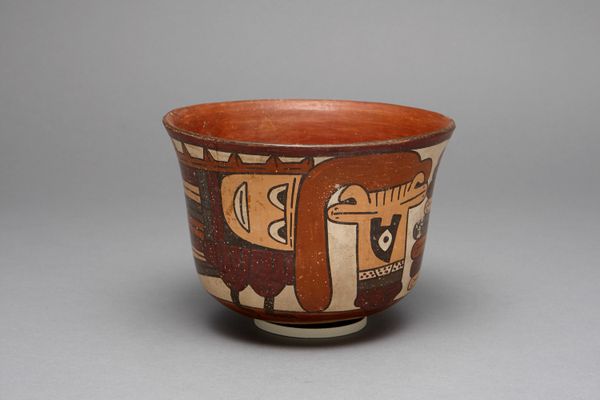
One of a Pair of Matched Bowls Depicting Costumed Ritual Performers c. 180 - 500
0:00
0:00
ceramic
#
pottery
#
ceramic
#
figuration
#
ceramic
#
indigenous-americas
Dimensions: 7.6 × 22.1 cm (3 × 8 11/16 in.)
Copyright: Public Domain
Curator: It's fascinating how much cultural information can be gleaned from such a simple object. This ceramic bowl, created by the Nazca people between 180 and 500 AD, offers a glimpse into their ritual practices. It's one of a pair, depicting costumed figures. Editor: Visually, the bowl strikes me as incredibly vibrant. The use of red, especially, really pops. What grabs my attention immediately is the textural contrast – smooth polished surfaces juxtaposed against what seems to be intentionally roughened areas. Curator: That striking red palette is typical of Nazca pottery, and it played a vital role in defining their visual culture, deeply interwoven with ritualistic expression. Imagine how these objects functioned within their society: as functional pieces certainly, but also carriers of symbolic weight. The painted scenes themselves would have likely resonated powerfully within specific ritual contexts. Editor: Right, I keep thinking about the hands involved, the repetitive action of building up the clay, and then carefully rendering the designs. I am drawn to this notion of repetition, both in the making and viewing of it, suggesting an almost meditative aspect for both the artist and the user. Do we know if specialists made ceramics such as this bowl, or was pottery more community-produced? Curator: It’s a good question, and it is highly likely specialists produced objects with elaborate imagery that demanded significant knowledge about local and spiritual beliefs, as is evident with “One of a Pair of Matched Bowls Depicting Costumed Ritual Performers.” Moreover, Nazca society, during the time the bowls were made, may have been socially stratified, making highly crafted works evidence of social standing. Editor: That is a great reminder that access to specialized labor, the kind required to achieve this level of detail and control over the material, suggests a complex social hierarchy was already in place. It also tells me that the circulation of material goods, even the functional ones, may have played a part in creating social cohesion or distinction. Curator: Absolutely, the very act of consuming from vessels like this became a ritualized and political act. It allowed the leaders, religious officials, and craft specialists to have and further sustain a visible status. These details remind us how crucial such work is to understanding a past social structure that is radically different than what exists today. Editor: The materiality of daily life gives so much insight into lived experience, when combined with larger structural perspectives like social history, as you pointed out. Thanks!
Comments
No comments
Be the first to comment and join the conversation on the ultimate creative platform.
